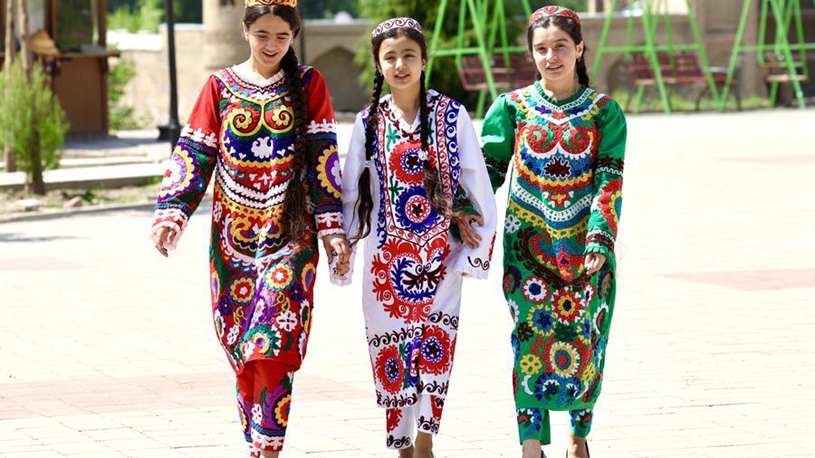Defying all odds, "Desert Poplar Spirit" works green miracles in Taklimakan
Source: Xinhua
Editor: huaxia
2025-06-23 22:34:15
URUMQI, June 23 (Xinhua) -- In the vast wilderness of Xinjiang's Taklimakan Desert, the populus euphratica, or the desert poplar, thrives against harsh conditions, withstanding cold, heat, alkali, and extreme drought while serving as a natural barrier against sandstorms.
Mirroring the indomitable nature of the trees, a dedicated group has taken root there, tirelessly working to transform sand into greenery. Their perseverance has crystallized into what locals call the "Desert Poplar Spirit."
Nurjamal Emdulla is one of them. After graduating from college in 2010, she returned to her hometown of Awati County in Aksu Prefecture to join the local forestry and grassland bureau.
In 2021, local authorities initiated a sand control project in the county's Aiximan region on the northwestern margin of the Taklimakan, an area characterized by extensive sand dunes resulting from desertification. This was when Nurjamal Emdulla's war against the sands began.
For days on end, she would spend over ten hours in the field. "I teach workers planting techniques -- how to dig holes, plant saplings, and water them correctly," she explained. "And how to secure each sapling's base with wire mesh to prevent wildlife from damaging the young plants."
The commute to and from work was no easy feat. "When sandstorms rage, visibility drops greatly, and even fresh footprints vanish instantly. Getting lost was routine," she recalled. "My mom would always complain that 'as a girl, you don't even have a chance to wear dresses.'"
For Nurjamal Emdulla, the harsh working conditions were never the real challenge. What truly unsettled her was the seeming impossibility of life taking root in those barren sands.
For desert control workers, failure is a daily companion. One strong sandstorm can uproot freshly planted saplings in minutes. And the scorching heat and lack of water can also claim the fragile seedlings.
"Oftentimes, it felt like what we were doing was pointless," she even considered quitting.
The turnaround came in spring 2022. One day, Nurjamal Emdulla discovered some new green on the branches of the saxaul shrubs, although it was too pale to be seen. "The trees were alive! I saw hope," she recalled, with tears brimming in her eyes.
Nowadays, vast stands of saxaul trees and tamarisk flourish across the once-barren lands, and long-absent wild animals such as hares, foxes and pheasants can be spotted occasionally.
The same kind of despair that once bothered Nurjamal Emdulla was also felt by people in Wenaletaikushi village in Kashgar Prefecture.
The village was encircled by desert on three sides, with encroaching dunes just 50 meters from the nearest homes. Villagers tried to plant trees but failed due to drought. Cotton and wheat yields withered season after season. Many abandoned their homes in search of a better life.
Dai Zhigang, 55, from the forestry and grassland bureau of Kashgar, was sent to work as head of the village in 2023 with a battle cry: "We will tame this desert!"
With the township government's backing, the village implemented drip irrigation systems to resolve the water shortage issue. And a trial planting of saxaul trees and Russian olive shrubs began in earnest.
"At the beginning, villagers were doubtful," he said; some call him "bottle gourd head," which in the Uygur language means a stubborn, silly person.
Indeed, the campaign was not without its struggles: the newly leveled sand dunes would reclaim their heights overnight after sandstorms; the freshly planted saplings were often uprooted by shifting sands.
After facing one defeat after another, a forest comprised of sand-fixation trees had successfully taken root last year.
"Now the villagers are convinced and as determined as I am to continue with our planting," Dai said. More and more villagers have voluntarily joined the desert prevention and control team. By this spring, over 160 hectares of desert had been regreened.
The resilience and perseverance are evident not only on the frontlines of desert control but also within research institutions, where science is waging its campaign against the encroaching sands.
Li Zhijun, a professor of Tarim University in Aral City, is called the "Desert Poplar Princess" by her colleagues.
Over the past 25 years, she has traveled across the Tarim Basin to collect wild poplar germ plasm resources, leading multiple studies on the conservation and restoration of populus euphratica forests.
Li and her team spend over six months each year conducting field surveys. When their cars get stuck in the soft sands, they pick up their heavy ladders and sampling gear, and trek the remaining kilometers.
They climb up and down the trees to collect samples and conduct measurements. When encountering strong winds, the team could only hold hands with one another and push forward against wind and sand.
"The desert poplar is a part of my life. Their resilience and vitality inspire me, enabling me to persist," said the 62-year-old.
Over the years, she led her team to over 60 counties and cities, collecting over 4,000 samples of poplar genetic resources. She developed conservation plans for various genetic resources of the species and established a gene pool for China's poplar resources.
Every day, such stories of failure, success, struggle and perseverance unfold across the vast deserts of Xinjiang.
Thanks to decades of sand control efforts, China completed a 3,046-km green belt of trees and sand-blocking technologies last November to fully encircle the Taklimakan Desert.
A brighter prospect is emerging for the sand fighters.
"We not only work to control the sand, but will also make money from it," said Dai Zhigang. Besides planting saxaul and poplar trees to fix the sand, the village is also cultivating economic crops such as licorice, roses, and watermelons. He also set aside a section of vacant sandy land with plans to create a desert park to attract tourists.
Asked about his plans to retire, he replied, "I'll keep working with the desert until the day these old bones turn to dust!" ■













Comments